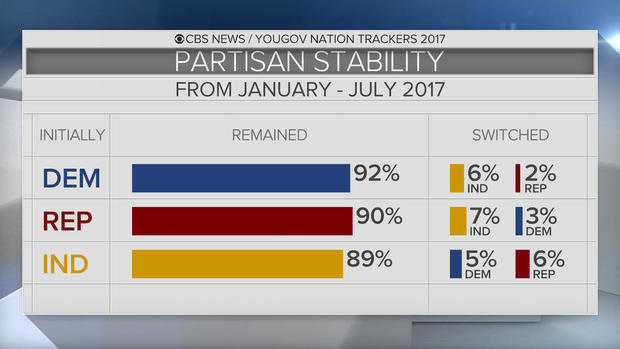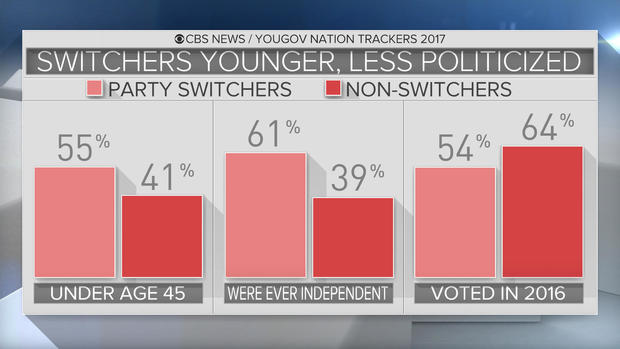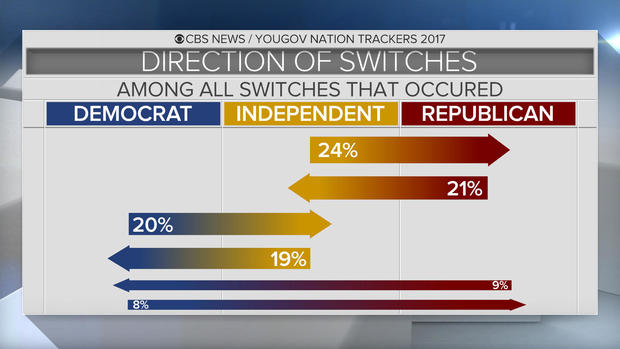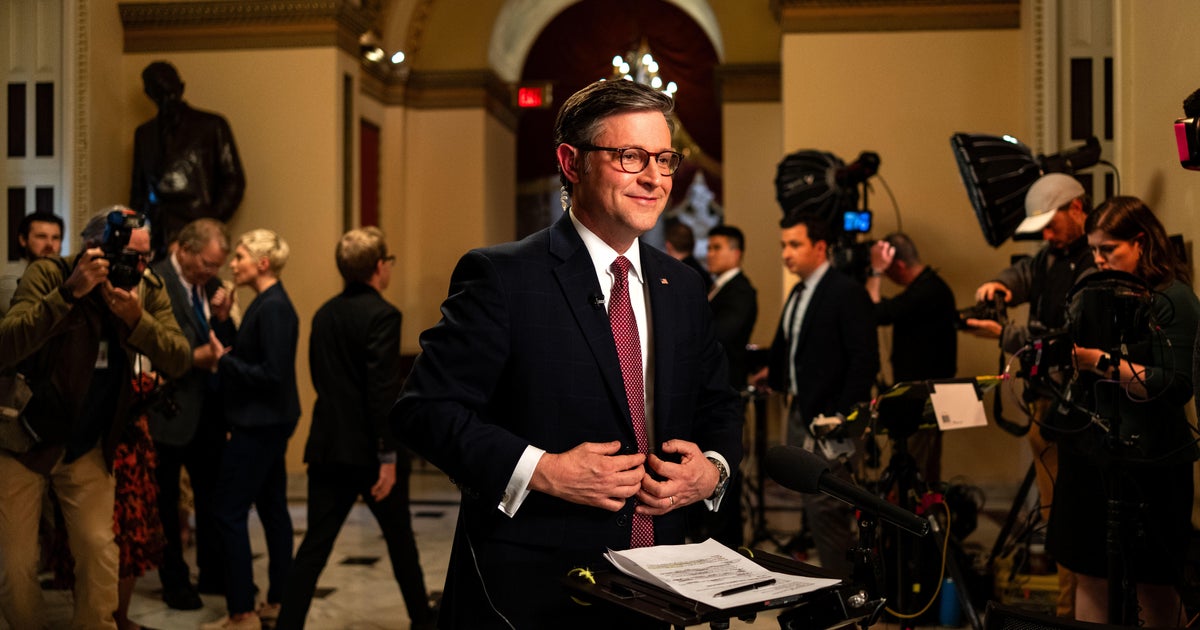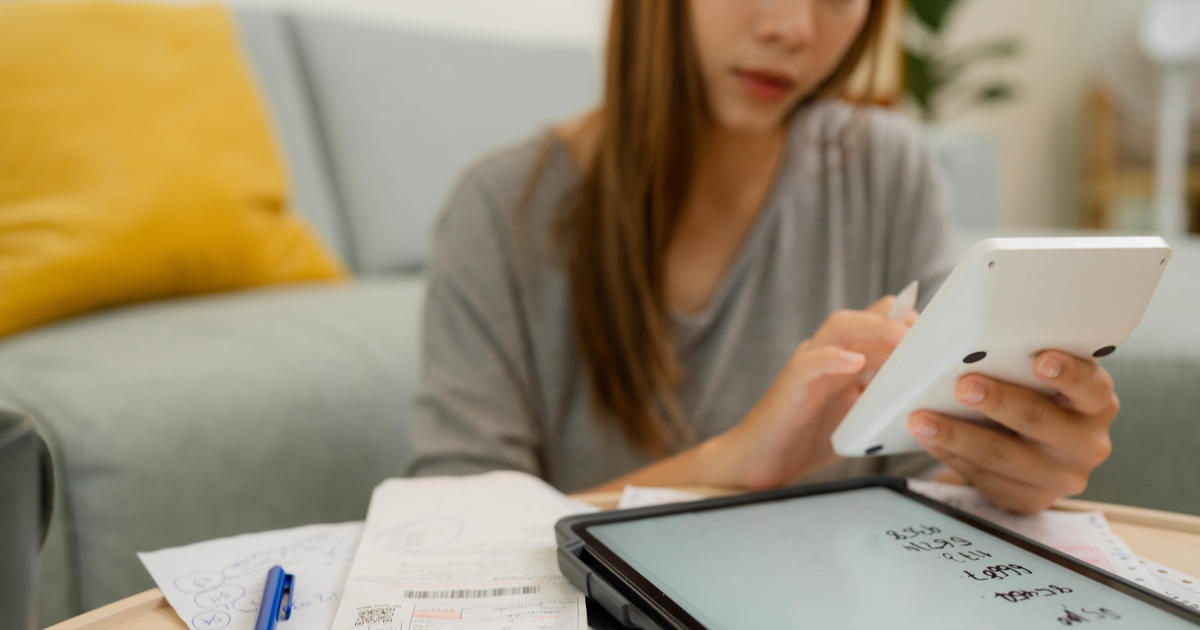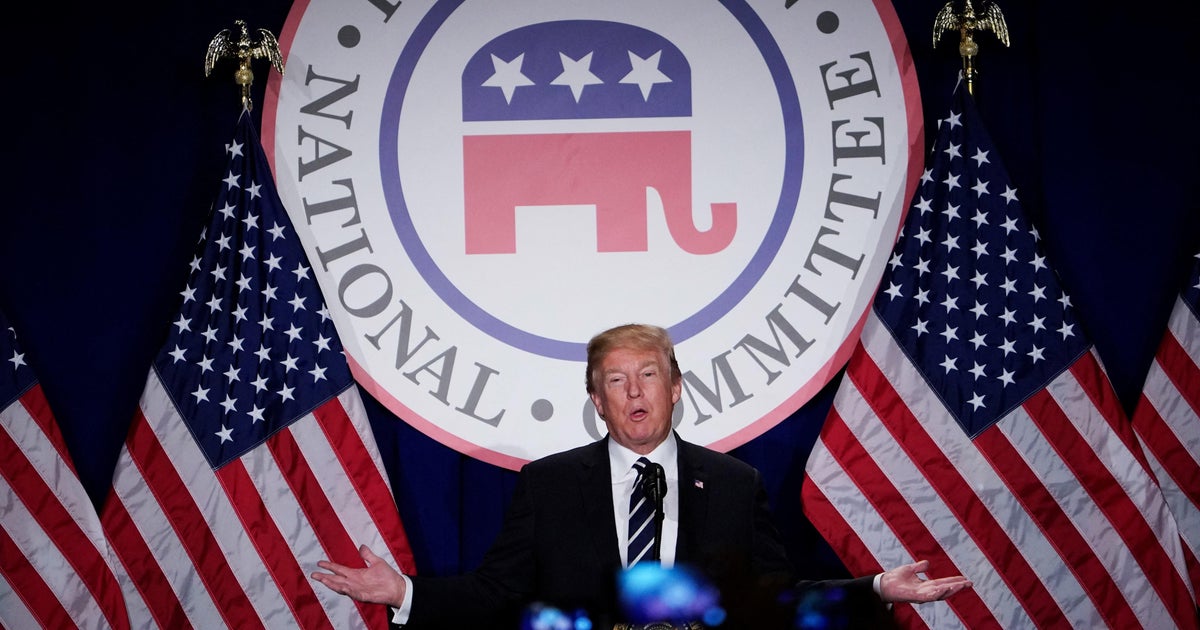2017’s big stalemate: Partisans stay locked in
We hear a lot these days about big partisan divides in public opinion, but Americans are also telling us they're fed up with partisanship in general, and often displeased with their own parties. That doesn't mean that they're ready to give up on partisanship themselves, though.
This study shows party attachments have remained very stable in 2017, with neither Republicans nor Democrats able to draw many independents over to their side so far. Democrats aren't becoming Republicans en masse, nor are Republicans becoming Democrats, and the few who have vacillated between parties aren't as likely to vote in the first place -- which sheds light on why today's politics often seems dominated by partisans.
With the CBS News Nation Tracker, we have a panel study that – unlike most polls – goes back and re-interviews a nationally representative sample of thousands of people to see whether their minds have changed on the top issues of the day, and if so, why.
This makes the Nation Tracker useful for explaining movement in public opinion. In each interview, we also ask respondents' party identification. We've interviewed people up to five times over the course of this year, giving us a chance to directly see whether individuals switch parties or not, as well as the characteristics of switchers.
Overall, 91 percent of respondents identified with the same party in their most recent interview as they did the first time we talked to them this winter. The chart below shows a great deal of stability among Democrats, Republicans, and independents alike. In each group, most chose the same party the first time we interviewed them and the most recent time (the last round coming in July).
The net shifts that did take place are small. Only 5 percent of initial independents identified as Democrats the last time we interviewed them. A similar 6 percent of initial independents had switched to the GOP, meaning that neither party had a real edge in its ability to draw independents over the course of these months. Switching from one of the major parties to the other is rarer still. Just 3 percent of initial Republicans became Democrats, and just 2 percent of initial Democrats went the other way to become Republicans.
This indicates that party identification is stable for the vast majority of people – about nine in ten – even over several months of news and political developments.
However, those who switch parties look quite different from those who stick with their initial group.
Party switchers: Younger, more diverse, less engaged
Switchers are younger than non-switchers are. At 55 percent, most switchers are under age 45, compared to only 41 percent of non-switchers. Switchers' relative youth hews to the idea that they have not formed lasting or immovable partisan attachments. Switchers also tend a bit more to be male and racially diverse.
In a separate question from which party they currently identify with, most switchers report that they have considered themselves independents at some point before in their lives. Six in ten switchers said there was a point in time that they were independents, in some cases, before the Nation Tracker began, compared with just four in ten non-switchers. Switchers were also less likely to say their friends and family share their political views, suggesting they have social networks that are more politically diverse. Switchers were also less likely to rate both Democrats and Republicans in extreme terms. Only one in six rate these groups as "Least favorable" on a five-point scale, as compared to about a quarter of non-switchers.
Importantly, switchers were also less likely to have cast a vote in the 2016 presidential election, likely reflecting their lower levels of politicization. Only 54 percent of switchers turned out last year, compared to 64 percent of non-switchers. As other studies of turnout have shown, this suggests that more deeply-rooted partisans are more likely to participate in politics, a phenomenon that is contributing to the divisions that we see today.
Which way are people switching?
Now that we've seen the kind of people who switch, here's a closer look at the switches that occurred and their direction. We have based this analysis on all the party switches we saw take place any time we did an interview with someone. Some people contributed multiple switches to this analysis if they switched parties more than one time over the period we talked to them, while others only switched once in that period. (The fact that some people vacillated so much is interesting in itself.)
As the chart below shows, most of the switches involve moving in or out of the independent category. Among all switches, 24 percent were independent to Republican, while 21 percent were Republican to independent. Democrat-to-independent switches and independent-to-Democrat switches are another 20 percent and 19 percent, respectively. Switches between the major parties happens much less: 9 percent Republican-to-Democrat and 8 percent vice versa. And across all switches, moving rightward happens slightly more than moving leftward. Again, we should stress that these are the total switch choices observed, not individuals, so this chart informs us about the way that people switch, not the aggregate totals for any given party.
In terms of an ideological label, Republicans who switched to independent actually called themselves more conservative than independents who switched to Republican. Aside from the label, these groups appeared equally conservative on many issues, such as health care and a border wall, indicating that there are more people who might hold conservative views on some particular policy issues than there are Republican identifiers.
Democrat-to-independent switches and independent-to-Democrat switches came from groups differing by age and certain cultural views, suggesting that the ranks of Democratic identifiers may be increasingly dependent on age and cultural issues. Most independent-to-Democrat switches came from people who are under 45, while most Democrat-to-independent switches came from people 45 or older. In fact, this young group of people becoming Democrats is the main reason switchers as a whole tend to be young. The net effect could be to reinforce the Democratic Party's advantage among younger Americans.
All told, rightward switchers were older, whiter, and more educated than leftward switchers. Leftward switchers were more likely to call themselves lower or working class.
Out and back again
About a third of switchers actually switched parties more than once (which amounts to 4 percent of everyone we interviewed at least twice). Instead of drifting in the same direction, most of these multiple switchers "came home," meaning they returned to their original group. Many partisans flirted with the independent label at some point before going back to their party.
The graphic below shows the four most common paths taken by the multiple switchers. One in five of them switched from Republican to independent and then back to Republican. Slightly fewer switched from Democrat to independent and back. Overall, seven in ten multiple switchers had come home by their final interview.
There was indeed more vacillation between categories on the right side of the political spectrum. People who started out as Democrats were more likely to switch only once (usually to independent) than those starting out as Republicans. Whether people switch just once or multiple times, a plurality ended up as independents.
Looking ahead
For those interested in polling methodology, all this also adds to the body of evidence that incorporating partisanship in a poll's sample weighting is a sensible idea. We see here that partisanship is a relatively stable parameter at the individual level – as is often the case in the aggregate – at least over this kind of time period.
This analysis also has implications for understanding and measuring partisan splits we see in polls on key attitudes, too, such as approval of the President.
For instance, CBS News polling shows that President Trump's approval rating among Democrats is the same now as it was just after he took office: about one in ten Democrats approve of the job he is doing. Republican support remains strong, but is being closely watched by observers.
Because partisan identification itself is strong, we know that the composition of those partisan subgroups is giving us comparable measures between polls. If partisanship was unstable, people might be moving in and out of those subgroups along with their views on the President, but we see that they are not, so this makes tracking his ratings among the partisans very reliable. And any aggregate changes we may see in Presidential approval down the road among Republicans or Democrats is likely to reflect true changes in opinion, rather than movement in party identification.
